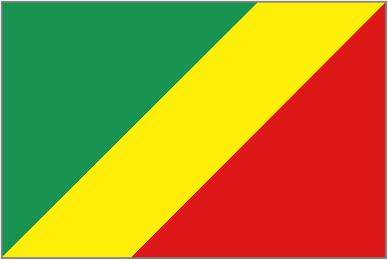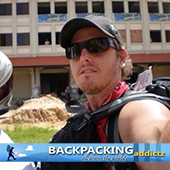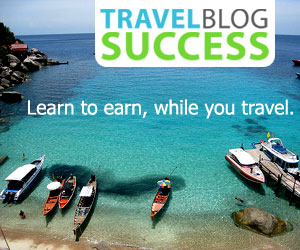- Population: 3.9 million (UN, 2005)
- Capital: Brazzaville
- Area: 342,000 sq km (132,047 sq miles)
- Major languages: French, indigenous African languages
- Major religions: Christianity, indigenous African beliefs
- Life expectancy: 51 years (men), 53 years (women) (UN)
- Monetary unit: 1 CFA (Communaute Financiere Africaine) franc = 100 centimes
Backpacking in Congo
The Republic of Congo is the regal and official Congo of the two, not to be confused with the other, the DR Congo formerly Zaire. Congo is a French colony until its liberation in 1960. But since then, the country has fallen in the hands of a questionable character, the misfortune of too many African countries that are wont to deceptive leaders, motivations, and aspirations. And this all reflects on its poor tourist industry, a sign of dislike towards transparency. One of the rather unfamiliar backpacker sites or tourist destinations, we are talking about mono-digits of tourists in a month. Travel does not simply involve getting on a plane and a hop-scotching in the green meadows of forever. The Congolese government is definitely not expecting tourists, no kidding.
So, credits to Nguesso and the endless civil unrest due to government corruption of the country and its other unresolved issues, some parts of Congo remain unsafe for travel. On one unfortunate day, a traveller may even be held, accused of being a spy because of the rarity of travellers here. Congo is a largely an unknown entity, but, quite certain enough, the republic is the friendlier and less threatening than the sprawling Congo neighbour of the almost exact same name. What many don’t know is that the country has lush green rainforests, lowland gorillas, wild chimpanzees, forever golden coastlines and oh-so-amazing Congolese music, making this nation, when the situation and timing is right, your ultimate newly-discovered destination jewel.
GEOGRAPHY
Congo (1 00 S, 15 00 E) is a 342,000 km2 relatively large country in the Mid-west Sub-Saharan Africa. The landscape is rather diverse from beach to forests, plains, valleys to highlands, the highest being the Mount Berongou at a height of 903 m. The northern and southern landscapes are basins, interrupted by a central plateau, and running off to coastal plains towards the Atlantic Ocean. The country lays along the equator which effects on its climate sufficiently. Acting as an invisible divider between the north and south, the equator also splits the country seasonally: upper-half and the lower-half, with the northern half a tropical jungle climate to its own benefit.
CLIMATE
The tropical climate of Congo owes its awesome conditions to its spot in the latitude, specifically on the Equator. The climate is favourably consistent the year-round with mean daily temperatures of 24°C, although it tends to be rainy from March through June. From the end of the rainy season, the climate reaches high temperatures and humidity, the only disadvantages of lying along the Equator.
PEOPLE
The Congolese population numbers at a modest 4,125,916 of 15 principal and 70 more subgroups, according to the most recent statistics. The population is concentrated towards the southwest of the country from the capital Brazzaville towards the coast, while the tropical jungle up north is largely uninhabited. Congo ranks 10th in the world for their fertility rate of 5.77 children born for every woman. The largest ethnic group remains to be the Kongo or Bakongo including half of the population, and the other major groups are Sangha, the Teke or Bateke, M’Bochi, and the Vili. There also remains a minor population of Pygmies, Europeans, and nationals of other countries.
LANGUAGE
As diverse as the ethnic background, there are 62 languages on the record in use. The national langue and trade languages are LINGALA and MONOKUTUBA. Officially, as a francophone country, the language has been FRENCH. Apart from these are many more dialects, with KIKONGO as the most widespread. ENGLISH is not in any way at its prime in this region when it comes to use. The population of English speakers are as scarce as the population of Americans and Brits in the country.
RELIGION
Greatly influenced by the European culture, the Republic of Congo is largely a melange of Christian denominations, mostly Catholic with 50.5% of the population. Then, Protestants ensue in number at 40.2%. The rest of the population identify with other Christian sects while the Muslim population of 1.3% are mostly foreign workers.
ATTRACTIONS
For many reasons, little is known about the smaller Congo, despite DRC’s renowned former identity as Zaire. Also called Congo-Brazzaville, the country has much more to offer besides its infamous privacy and ridiculous security such as stylish architecture, immaculate coasts, and thrilling adventures. Brazzaville is where the French mainly and decidedly departed their grand legacy in the country, as their influence generously reflects on the architecture of the cosmopolitan city. But, like the Basilique Sainte Anne, the style is not without the local flair. Speaking of one major city, for the sun worshippers and surfer dudes, the city of Pointe-Noire offers excellent beaches like the Twiga Beach, nearby in the Cote Sauvage region.
More so, the country prides on its spectacular tropical ecosystems as a land of vast virgin forests, precious wildlife, fast falls, wild rapids, and even a mountain near the coast. Diversity at its finest, one must say, especially in one of Africa’s largest, albeit relatively unknown tropical ecosystems, the Odzala National Park. A bunch more nature reserves have sprawled over the region, endowed as it in fact is with all the greens, flowers, and forests like Lefini, Conkuati, and Mount Fouari Reserve. Otherwise, the Lesio Louna Gorilla Reserve is the best place to go to for sightseeing of life amid lush foliage. While the Loufoulakari Falls is the most impressive falls and panorama, the action’s at none other than the controversial Congo River from rafting to waterskiing in its white waters.
FOOD
Still, joie the vivre shall and will be discovered. All around Africa, maize meal is the staple, the starchy base. In most parts of Congo, cassava is the base for most meals. Eaten as paste like mashed potatoes or the maize meal, the cassava flour turned paste is called fufu, which is then rolled into a golf ball and dipped into a typical meat and vegetable stew. Other starch alternatives are fermented bread made from cassava or kwanga, baked balls of mashed plantains or lituma, and, of course, rice. Travelling to Congo is also a little food expedition in itself because the culinary traditions and preferences are none we consider ordinary like goat meat, that’s their standard red meat, as beef and pork are to most of the modern world. Fish are also a favourite and is truly awesome especially when grilled, whatever variety of fish.
But, the national dish isn’t any of these. Named after “palm cream”, moambe, is quintessentially a chicken stew in palm cream or palm butter and peanuts or peanut butter. This could be any meat, even crikey meat, only the chicken is the most modest flavour of the other choices of meat, which for somebody to try it for the first time, will find generally comforting. Unfortunately, desserts are not part of a traditional Congolese meal, but, BOY, don’t the people love sweets in here! At least, in these parts, that would be sweet fruit and sugar cane. Dessert made with fruit is Congo cuisine keeping up with the times. Basically, with what ingredients are available, desserts are either starch based or elaborate with nuts like the couscous and sour cream desserts called caakiri, kanyah with ground rise and toasted shelled peanuts in sugar, or coconut pie.
***





Leave A Response